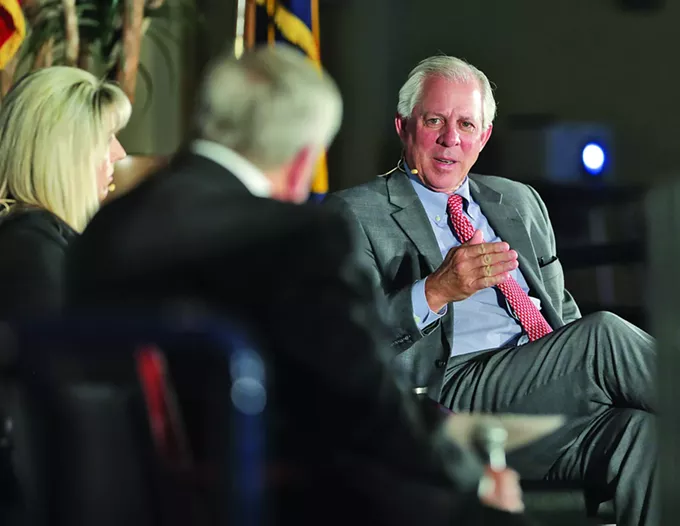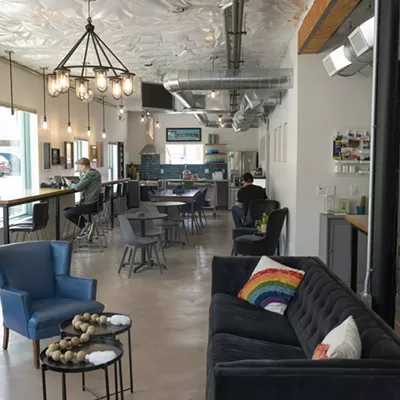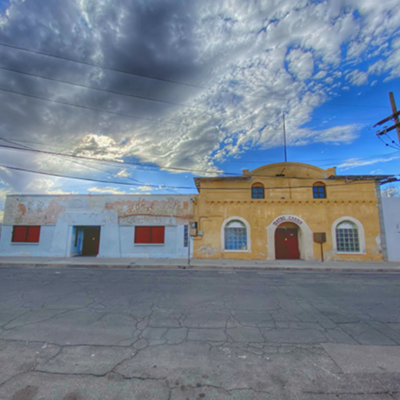
Arizona will be issuing far fewer bachelor's degrees through the end of the decade than are needed to fill jobs, according to a new report presented at The Future of the Workforce, a discussion sponsored by the University of Arizona Eller College of Management’s MAP dashboard on Thursday, April 21.
“Arizona is at an inflection point in its economic trajectory with a comparatively low college completion rate and a growing labor demand for workers with bachelor’s degrees,” the Advancing Arizona’s Economy: Investment in Workforce Development report noted.
Ron Shoopman of the Arizona Board of Regents warned that as a result of that low graduation rate, Arizona won’t have enough people to fill the jobs created by development in Arizona’s private and public sector.
The Advancing Arizona’s Economy: Investment in Workforce Development report estimated Arizona will issue 26,300 fewer bachelor’s degrees than the economy needs annually until 2030.
“Last year, companies in Arizona imported, hired and moved into Arizona 19,000 people with four-year degrees to fill jobs that they couldn’t fill with the people in Arizona who were either unwilling but likely just not qualified to fill,” Shoopman said.
Shoopman, however, doesn’t put the blame on Arizonans. He said it goes back to what the Board of Regents found in 2019: Arizona has a 79% high school graduation rate. One out of every five students in Arizona is not receiving a high school diploma.
“We know … that if you don’t have a high school diploma, you probably don’t have a job,” Shoopman said. “Less than half of the people in the state that don’t have a high school diploma are unemployed.”
Shoopman said this report made it clear that Arizona needs to be doing better by their students and preparing people for the workforce. However, Shoopman said Arizona doesn’t need to funnel students into four-year universities. He said state leaders needed to also focus on certification programs, community colleges and trade schools.
Jennifer Pullen, senior research economist at Eller College’s Economic and Business Research Center, revealed that a surplus of jobs available in Arizona had dramatically increased from the early months of the pandemic. In January, Arizona had 241,000 open jobs in Arizona, which amounted to 80,000 more jobs than February 2020, according to Pullen. Although Tucson has been slower to recover these jobs compared to Phoenix, the statewide unemployment rate for March was 2.9%, a 23-year low.
“There are primarily two reasons that the unemployment rate falls: Either those unemployed individuals find a job or those unemployed individuals leave the labor market,” Pullen said.
Pullen speculated that many people chose to retire during the pandemic or left the labor market to take care of themselves or family. Skyrocketing housing prices also increased the equity of homeowners, which could allow them to stay out of the labor market for longer periods of time. Migration should also be considered a part of the equation, although international migration fell during the pandemic. Pullen noted that inflation may bring workers back into the labor force.
Pima Community College Chancellor Lee Lambert said the job market is changing to match new trends.
“We’re moving from a first-curve society, the industrial era, to a second curve era, which is a knowledge-based digital era and at the center of that is this notion of skills,” Lambert said.
The overwhelming statement from each presenter and panelist is the urgent need for preparing Arizona’s workforce to fill the jobs the state has created.
Mister Car Wash CEO John Lai said during his panel appearance that investment in early education is the obvious answer to the incoming increase in job openings.
“There’s a revenue issue,” Lai said. “We have to pay teachers more, or invest in our school systems, preK, K through 12, and we’re not doing that. The high school graduation rate was shocking. It’s a precursor to college.”
According to the Board of Regents report, Arizona is currently sitting at an inflection point where jobs are increasing too fast for people to fill the vacancies. Shoopman said it is imperative the state prepare Arizona’s next generation of students and workers by investing in the education system to retain students in the system.







